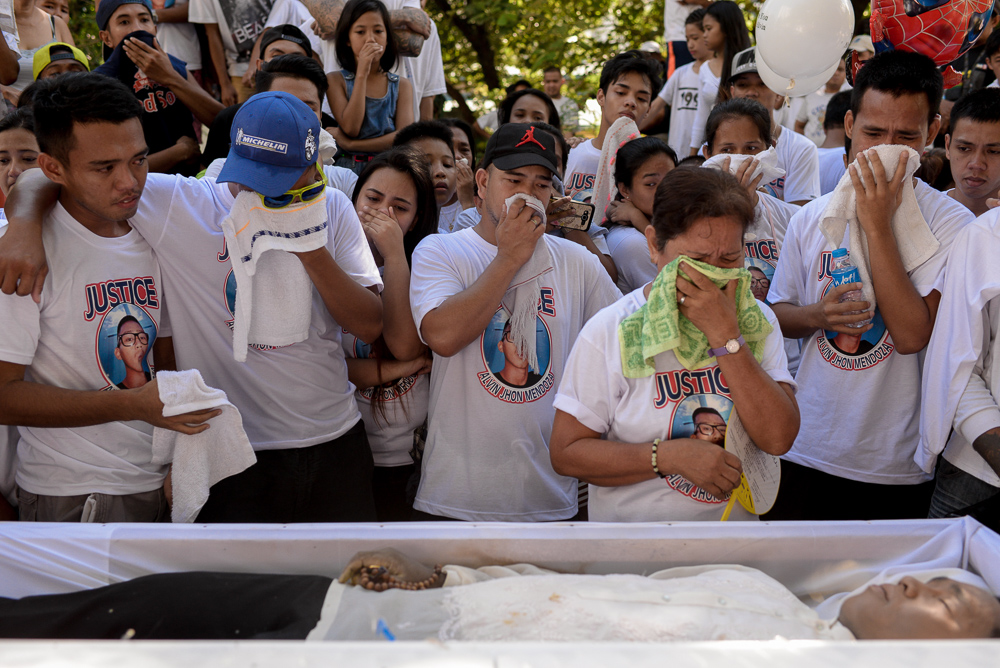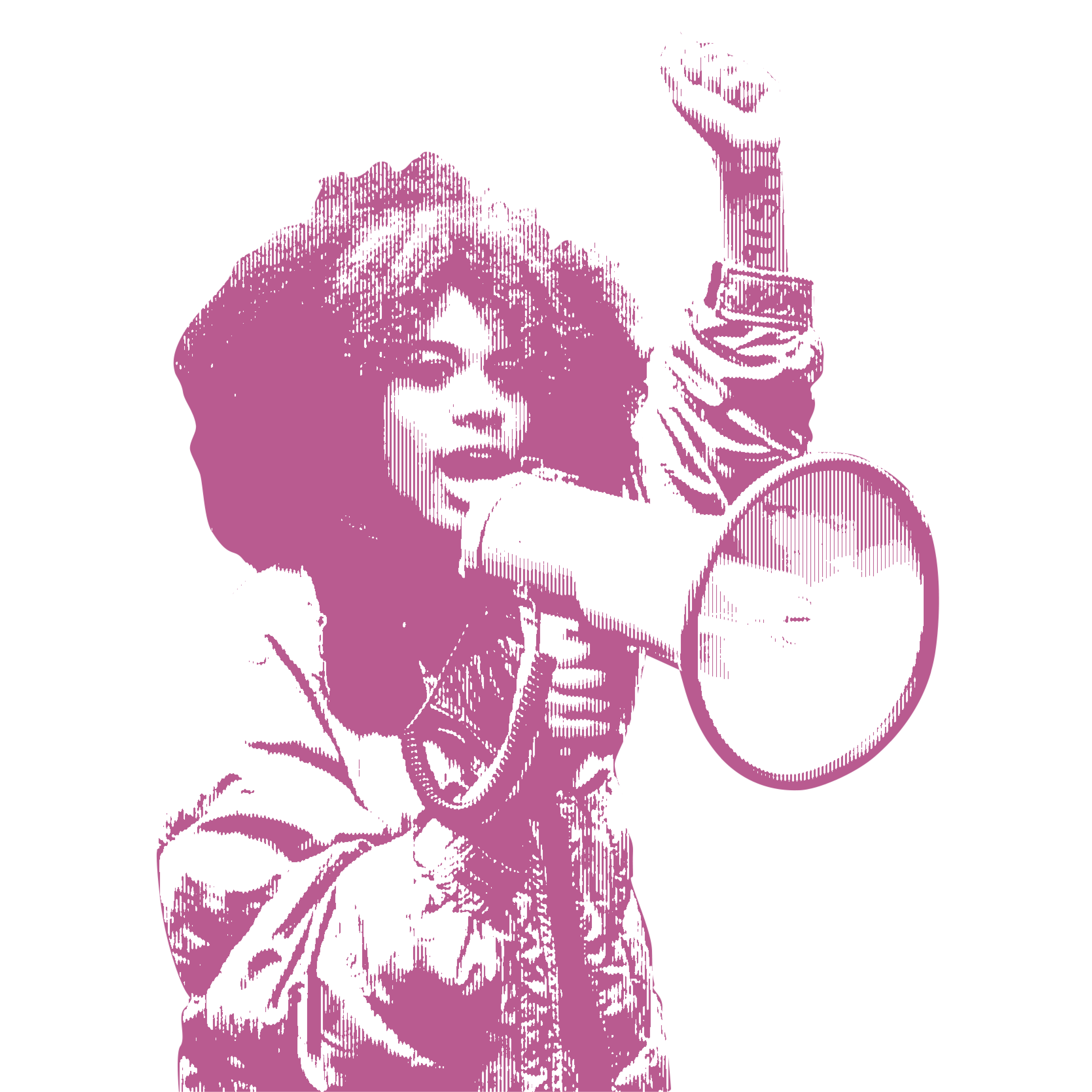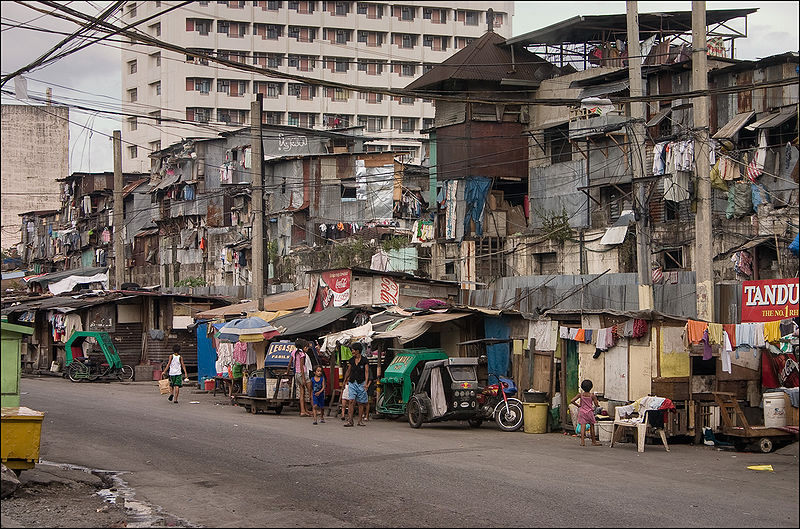
One night in December, I was standing in heavy rain, under an umbrella, in a dark Manila alleyway, outside a house known to be a drug den, waiting with "the night shift," the photographers and reporters on the crime beat, on the off chance of being shown upstairs to the scene of the killings. We knew the story in outline only: four men had been getting ready for a pot-smoking session on the second floor when a masked intruder burst in and shot them all dead. There was one witness, a sixteen-year-old boy, but he was said to be too shocked to speak.
Now the police were examining the upstairs room, while we examined the alleyway. There wasn't much to it. Someone had scrawled on the wall two local synonyms for pot: dubie and chongkee. So this had been a potheads' hangout. Now, for a while, it would belong to the SOCO — the scene of crime operatives — before the bodies were handed over to whichever firm of undertakers enjoyed the concession for this kind of work. There was an established routine in these matters.
A man came out of the building and stopped, seemingly on an impulse, as he passed by me. He was more carefully dressed than the rest of us. From the fact that he was accompanied by his own barangay policeman, I took him to be a local official, perhaps the barangay captain himself. "Excuse me," he said, in a tone that managed to be both urgent and fussy, "but, as a matter of information… as a matter of information, something terrible has happened here." His face had a crumpled look that I recognized instantly from long ago — the look of a face that had seen something our faces were not designed to see: carnage, for instance.
"As a matter of information," he repeated, as if the phrase were something he could lean on, when all other props had suddenly been kicked away, "as a matter of information, something terrible has happened in this country." Then he made as if to go, so I was moved to thank him for taking time with me. And I turned toward the upstairs room. "Can you tell me," I asked, "what has happened there?" He looked back with horror toward the scene he had clearly just left. He seemed about to use one word, then change his mind in order to frame the modish acronym that offended his natural fastidiousness. "EJK," he spat it out, "EJK!" and left.
There are two chief kinds of carnage taking place here, these wet Manila nights. There is the "buy-bust" operation, in which the targeted criminal attempts to buy some drugs, only to find that he is dealing with undercover police. He panics and reaches for a weapon, a pistol perhaps or a kind of homemade shotgun. Before he can use it (so the familiar script reads) the police shoot him dead. There have been around two thousand of these buy-bust killings since the war on drugs under President Rodrigo Duterte began at the start of July. The dead are both pushers and users. If you're a user, Duterte's wisdom has it, then you're also a pusher. And even if you aren't a pusher, the users of the drug in question, "shabu" or crystal meth, very soon forfeit their claims to humanity. They lose their souls. The only thing to do with them is kill them.
This is the horror topos. I heard it, without asking for it, on my first day here in the Philippines. The shabu user, deluded and inhuman, looks at his family and what he sees coming at him is a pack of wild beasts. He becomes frantic. It's him or them, do or die. Don't talk to us about the human rights of this kind of violent zombie. Get real. Kill him before he kills you.
A rival view: just as Valium was nicknamed "mother's little helper" in the Rolling Stones' (actually rather hypocritical) song, so shabu, in modest quantities, helps the poor man a little better to endure a difficult life, and in particular to work longer hours. We heard this at a wake, from the pregnant widow of a pedicab driver. He took shabu once a week on this kind of pretext. His wife, she told us, said to him: If you can do that and still support the children, that's all right. The calculation depended on his ability to function as a breadwinner. But it was a miscalculation, for the husband fell victim to an EJK.
An EJK, the second form of carnage, is an extrajudicial killing, and it was outnumbering the buy-bust incident, this December, by roughly two to one. A buy-bust is of its nature attributable. A particular group of policemen takes responsibility for a particular killing on grounds of self-defense, and though doubt may be cast on their story (which repeats and repeats the same formula) there is no mystery about the people involved. The people the police shoot "in self-defense" are classed as nanlaban, which means "fought" as in "he fought back." But Duterte himself, in a speech before Christmas, in a mixture of English and Tagalog, seemed to imply that the guns found at such crime scenes had been planted, and on his orders too:
I said, O sir, if they are there, destroy them also. Especially if they put up a good fight. O 'pag walang baril, walang — bigyan mo ng baril. [If they don't have a gun, give them a gun.] Here's a loaded gun, fight because the mayor said, let's fight.
The rules of the buy-bust may be a transparent fiction, but an EJK is an act of terrorism. Its anonymity is of the essence. Nobody knows who is organizing this program of killings, or who is carrying them out. Duterte's many remarks on the killings often contain some element of ambiguity. Referring to a particularly gruesome form of killing, in which the victims are found with their faces wrapped in plastic packing tape (presumably they died through asphyxiation), Duterte said:
We do not do that. It's a dirty job. It is unmanly to tie them up; wrap them — it's a form of torture…. That's not the work of the police or the soldier even. Why the trouble of wrapping them up if you can just kill 'em? We are not producing mummies.
What we hear, and what we can extract from the president's monotonously droning speeches, sounds like (and is meant to sound like) scraps of confidential instructions to the police: if the victim doesn't have a gun, give him one; don't waste the effort on torturing him—just kill him. But as soon as the president is taken up on such remarks, there is either an aide on hand to say that he was exaggerating when he said that, that his words are to be taken seriously but not literally, or the president himself is denouncing his critics in another speech, calling them any name that comes into his head. Meanwhile the message to the public at large is: whatever happens, Duterte's hand is in it; and there is no real distinction between a buy-bust and an EJK.
An EJK I covered went like this. It was the middle of the night and the family was asleep. Masked men barged in. "Where is Fernando?" said an intruder. A woman answered: "There's no one called Fernando here." At this point, an eight-year-old girl woke up her father, Ernesto. As he awoke, Ernesto said, "Oh." He was shot immediately in the middle of the forehead. The intruders escaped.
They nearly always escape. At one such scene in the north of Manila, a man had been shot in a warren of a building, where the passageway was almost too narrow for two people to pass. And there was only one exit, a set of awkwardly constructed steps. I was examining these steps and thinking what confidence it showed on the part of the killers, to choose a place that was so difficult to get out of, for their planned murder. Then I was told what the neighbors had said. They had said: When the shooting began, we all closed our doors.
Of course you would. You would close your doors and wait. And the killers would know you were going to do that. And when we say "doors" here, you mustn't imagine anything more than an old piece of repurposed plywood, ill-fitting, no doubt. One such front door, in another poor home, had a gap on either side, through which the killer was able to fire into the house. The second shot found its intended victim. The first shot killed his six-year-old son.
You open your eyes. Your son is dead. Then you're dead next. This is an EJK.
At the wake of the victim and his son, the two open caskets were on display in the marketplace. Sympathizers came to sit with the family and (as is the custom) play cards — the men and women at separate tables. The faces of the dead were visible under panes of glass or clear plastic. On the child's coffin, newborn chickens had been placed, with a small supply of cornmeal. The tradition is that the chickens peck at the consciences of the killers. One stared down at the face of the child through a surface smeared with chicken shit. Below the coffins sat the pregnant mother with a baby in her lap — pale and sickly both of them. The chickens went on picking at the meal.
An EJK can be extremely swift. At one crime scene, the CCTV showed masked men breaking into a man's house at 01:58. When they came out again, having shot the man, it still showed 01:58. The timer on the CCTV was functioning. It had simply taken less than a minute for the killers to break in and do their work. And this, in part, would be because the house of the victim was — like many houses of the poor — nothing but a lean-to shack, in essence, occupying six feet or so of sidewalk, but probably no more than four feet deep.
Care had been lavished on this structure, which was formed partly out of the remains of what looked like an old picket fence, painted in alternate stripes of blue and white. A screen in a small window had been devised, using a child's plastic abacus, to establish a little privacy. It could have been a cheerful sight — many slum dwellings are colorful and cheerful, particularly with the Christmas decorations at this time of year — were it not for the corpse, and the SOCO, and the arriving undertakers, one of whom wore a T-shirt inscribed: Mother Teresa Crematory and Columbaries.
The police summon the undertakers (with whom, as mentioned, they seem to have an arrangement), and the hearts of the poor just sink at the thought of the cost. A thousand dollars at least will have to be found. It is not uncommon, when a woman is informed of her husband's death, for her very first reaction to be: We can't afford this! Don't take him away — we haven't the money. But the undertakers have their work to do.
There are mourners in the crowd. Beside me are two middle-aged men, one wearing the T-shirt of the barangay police, the other with his arms draped around his friend's neck. One might suppose them a couple, from the way they lean against each other for support. But I think that support is what this intimacy is about. One of the men has been weeping, and from time to time the tears return. It is an ugly face, and grief has made it uglier, as it often does. It is ugly and touching, indifferent to the crowd, a face looking toward the house where the men from the Mother Teresa are working, in that narrow space, to get the body into the bag they have brought.
I cannot help noticing, when the reporters and photographers of the night shift arrive at the scene of a crime, and we step smartly along the slum alleyways, and the people in the doorways know exactly what it is we are about, how often the crowd will include cross-dressing or transgender onlookers, with wild hair dyed and styled by themselves (the beauty industry is one place they can find work). One half-expects them to be as aggressive as their fashion sense, but they hang back a little shyly at the edge of the scene.
Now, outside the picket-fence house, the daughter of the dead man tells the press that she does not believe this has anything to do with drugs. Her father was neither a user nor a pusher. But there had been a row over some money entrusted to him in connection with some construction project. And there had been death threats in some other connection. So, if what she was saying was true, this particular killing was a settling of scores, designed to mimic an EJK of the familiar kind. The drug war becomes a cover for other forms of revenge.
As G.K. Chesterton's hero Father Brown put it in one story: Where does a wise man hide a pebble? On a beach; and where does a wise man hide a corpse? On a battlefield. Many pebbles, it is believed, have been hidden on this particular beach. And you can imagine the variety of pretexts there would be for revenge — old insults, rivalries, a sense of injured merit, matters of love and sex. And then those kinds of fury that can come at you out of nowhere, when for instance a drinking session has gone on too long, or when, indeed, drugs have induced a bad trip.
A mystifying example of corpses hidden in plain sight: a series of bodies were found with the usual cardboard placard explaining their crime, only this time they were identified as "barkers." A barker is the man who calls the passengers to board a jeepney (the local form of small bus). There is nothing disreputable or antisocial about being a barker—indeed, it must be a very old profession, much older than the jeepney itself. One can only assume that a particular individual was done a particular injury by a particular barker, an injury so bad that he was moved to take vengeance on the profession.
On two occasions, during the short time that I was going out regularly on the night shift, we came to a scene where there appeared to be no mourning for the newly killed. Once, to the north of the city, where it seemed we were just on the edge of the countryside, we left our vehicles to walk down an unpaved road. There was birdsong, from caged birds. I had a strong sense of going back to the barrio, to rural life, after an absence of many years (I lived for a while in a remote part of Luzon).
People waited, pressing against the police tape. We looked toward a house, the property of a man whose habit it was, so the neighbors said, to get high on drugs, and then start shooting at random. Naturally the neighbors did not like this, and had been complaining for some time to the police. That night, finally, their calls had been answered. The police had arrived and, as they approached the house, the man shot at them, grazing the head of one of the officers (who thought at first he was a goner). According to the police, the enraged man had been sitting at home, with a bucket full of bullets at his side. They killed him and three of his companions. No one, as far as we could tell, was weeping.
Another night, we came to a scene where the policeman in charge was proud to announce a classic buy-bust operation. The dead man had been a dealer, a loner, and as we learned from the neighbors, a man with a sinister past who was said to have killed his son. He had defended himself, we were told, with a homemade shotgun. He was dead but in a place that it would be impossible for us to visit, up some unsafe steps. We settled down to wait for the body bag.
The part of town in which the dealer had lived was, at first sight, the same kind of shanty agglomeration as I had visited elsewhere on the night shift. On closer inspection, it turned out to be a cut above the rest. The houses were made of cinder blocks or real timber, and extended to two floors or sometimes more. Often they were well painted, and while it might be an exaggeration to call the place clean (or rat-free), it was kept tidy and well swept, and the more you looked, the more evidence you saw of the daily effort being undertaken to make life just that little bit better than you might expect. There were the Christmas lights, of course, along the narrow pedestrian main street. And there were pots of sampaguita, Philippine jasmine. The people were friendly and hospitable, and lent me an umbrella and a stool.
If, in what I had come across going out on the night shift, there was anything that had probably met the aspirations of those who had voted for Duterte as president in May, it was these two scenes. For Duterte was and is very popular, and his drug war is popular too, for the moment. People like the drug war, but they are not entirely at ease with it. They do not think that the victims of that war should die (although that is a defining characteristic of the war so far). On the other hand, when there is somebody particularly antisocial, as in the two cases above, they are prepared to say: "He deserved it."
In a survey by Social Weather Stations, 69 percent of those polled thought the incidence of EJKs was either very or somewhat serious. Only 3 percent thought it not serious at all. As to whether they believed that police were telling the truth that the suspects they killed in buy-bust operations had really resisted arrest, doubters and believers were evenly split, with 28 percent saying the police were definitely or probably telling the truth, and 29 percent saying they were definitely or probably not doing so. Overwhelmingly, however, 88 percent agreed, strongly or somewhat, that since Duterte became president, there has been a decrease in drug problems in their area. And that is the perception that appears to have trumped all others.
There's less of a drug problem. You can walk the streets at night, one is told. And yet the price paid is most striking. Asked how worried they were that they or someone they knew would become the victim of an EJK, 45 percent replied that they were very worried, and a further 33 percent that they were somewhat worried. That is to say, four out of five respondents were worried to a significant degree that they, or a friend of theirs, might end up bound and gagged in the gutter, or shot by a masked man on a passing bike, or woken in the small hours to receive a bullet in the head.
Are they right to worry? Statistically, the answer would seem to be no. If you are young, male, and poor, then, yes, you should worry. For Duterte's war seems very much to be a war against the poor. But the further you move up the social ladder, the less you are likely to be affected.
That kind of reasoning, however, rather ignores the pervasive effect of terrorism. The targeted killings have their message for the world of the drug users and dealers. The crazy and seemingly haphazard extrajudicial killings, the corpses suffocated with packing tape and dumped at the side of the road with sadistic jokes on cardboard signs (and one that, when turned over, revealed a smiley face) have a message for everyone: nobody is safe.
A student was shot in Manila the other day, by a typical "tandem" team of two men on a motorbike. As the shooter got back on the bike, he was heard to say: "It's not him."
Once again, it's the speed that's unnerving. The killer takes aim, but in the moment he shoots he knows he's made a mistake.
But these mistakes have their part in the whole grand plan: no one will be safe until many, many more have died.
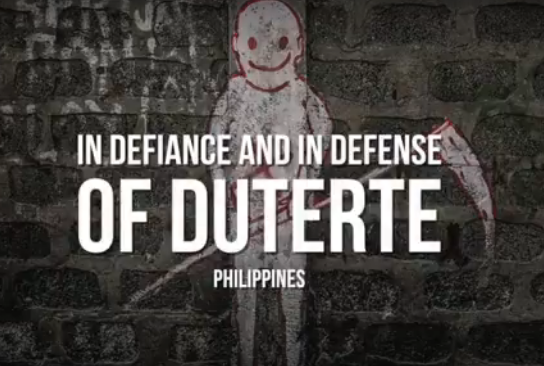
Education Resource
Meet the Journalists: Ana P. Santos and James Whitlow Delano
When he made a pitch for the presidency of the Philippines, Rodrigo Duterte made a bold promise to...
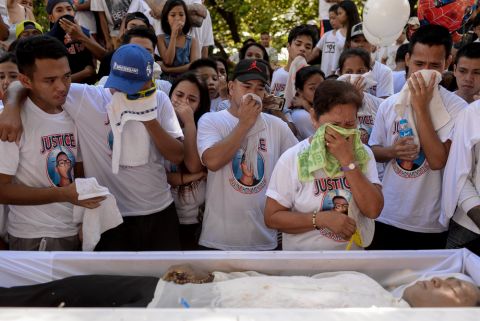
Education Resource
Meet the Journalist: James Fenton
Writer James Fenton discusses his recent reporting for the New York Review of Books on the war on...


